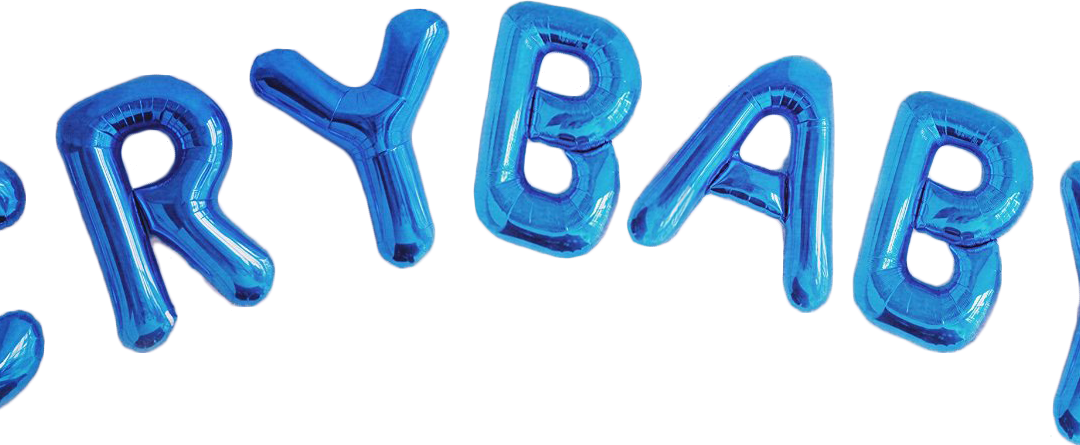You’re Such A Cry Baby!
No – I don’t mean you are a cry baby! It’s just something you may have heard as a child – or as an adult. And It is something that is, by implication, considered ‘BAD’. Clearly I can see the relationship between ‘cry’ and ‘baby’, as I have heard they can do quite a bit of it. What I fail to understand is where the analogy picked up its negative connotations?
Why is it bad to cry?
It’s definitely a cultural thing. I’m sure in the Mediterranean countries, emotions are far more ‘acceptable’ than they are in stiff upper lip Britain! The fear of crying in public is especially debilitating for some people and likely to make them avoid such situations.
This was definitely true for Jo Corbishley – The Identity Coach – who I interviewed in last weeks blog. She was completely unable to tell her, very powerful, story for quite some time as she felt she wouldn’t be able to do it without collapsing into tears.
This is a common reason why people worry about telling their story in a public speaking situation, even though their story is probably the thing that their audience needs to hear more than anything else.
There is no quicker way I know to build rapport and empathy with an audience than to share your story. They need to see the real you. They need to understand that you have been where they are and can, therefore, help them move on / solve
People often cry when telling their story because they have not really acknowledged their feelings. Perhaps they have been avoiding or bottling up those feelings for so long, that they convince themselves that – if they start crying, they will never stop.
Actually the opposite is true.
Once you have acknowledged the source of the pain and allowed yourself to fully accept those emotions, the less hold they will have over you. Of course, somethings will always be painful. If you have loved someone and lost them – in whatever context, you are always going to feel their loss. In Jo’s case, the loss was of a future she had hoped to have, a future with children, that she found she could never have.
You can bottle up your negative emotions all you like, but one day the bottle is going to break. It’s best to have that happen at a time when you decide to allow it – trust me!
Once you can ‘go there’, once you can accept the situation that happened and the emotions that came with it, then you can move forwards into a new reality. And then you are in a position to help others face those same challenges.
Crafting your story – especially when it is a painful one – can be very challenging. You are so close to it, it can seem overwhelming and can come over as depressing to others. The key is light and shade. You need some humour – even in the darkest of times – to keep you going. Remembering that your audience does not need a blow by blow account. They do not need a historically accurate step by step.
So, what makes a good personal story?
A good story is one that is audience-focused. You know your story – you were there, right? So, the purpose of telling your personal story to an audience is not for you to be all self-indulgent and ‘poor me’ neither is it for you to gloat in the glory of overcoming your challenges.
It is for your audience to get to know you and clearly see where you were (which might just be where they are now if you have the right audience). During your story, they will understand your struggles (which they might just be experiencing) and in this process, they will come to understand and have empathy with you.
This is important because unless they like you, and feel a rapport with you, they ultimately – probably – won’t follow your advice / buy your programs / want to be part of your tribe.
Crucially, they also need to see that you found a solution to whatever your problems were. And they need to believe that you can, therefore, help them. In fact, you might just be the very thing they were looking for.
All of that needs a carefully crafted story.
It is the truth of what happened to you, but as my friend Carole Fossey likes to say – “It is a Story and not a History”. Meaning – everything in your story doesn’t have to happen in the exact same chronological order that it happened in real life. Things don’t have to be said by the exact same people. Something that was a conversation with someone, could be a thought in your head, or vice versa.
What matters is that the essence of the story is the truth. And that it takes your audience on a journey from stuck to unstuck. From problem to problem solved. From old life to new life.
And that may need the help of a professional story coach!
If you would like to see that in action – come and join our Facebook Group – How To Speak With… where I do some video feedback/training on a short speaking video that members send in.
CLICK HERE to join the group
And – till next time – go be a cry baby!!
